First green integrated development
There were about 600 squatters in Kampung Haji Abdullah Hukum, their houses packed together. If you were not familiar with the place, you wouldn’t dare go in. I admit I was a bit worried when we decided to develop the KL Eco City (KLEC) project there,” says Tan Sri Liew Kee Sin, president and CEO of S P Setia Bhd, describing his first visit to the kampung in 2001.
A decade on, the 24-acre integrated development on the fringes of the Kuala Lumpur city centre has been officially launched. A joint venture with Kuala Lumpur City Hall (DBKL), it has an estimated gross development value (GDV) of RM6.5 billion. The master plan designer for the development is Stuart Berriman of Jerde Partnership International (see accompanying story).
“This is one of the most challenging pieces of land in Kuala Lumpur [to develop] because it has three owners — private landowners, the federal government and KTM Bhd. Buying out the private landowners was the easiest part. The government and KTM land, and the resettlement of the squatters took us a lot more time to sort out,” explains Liew. It was only in 2007 that the developer managed to resettle the squatters in some flats nearby, an effort that took six years.
The site itself posed a challenge. While it is in a good location, it is physically constrained by the Klang River and Jalan Bangsar. The delay, however, turned out to be a blessing in disguise.
“The delay gave us time to come up with what we believe is a world-standard, eco-friendly integrated development with excellent interconnectivity,” says Liew.
With a light rail transit station already in place in Abdullah Hukum, a KTM station in the works, and should the proposed mass rapid transit circle line be implemented by the government, KLEC will be one of the few developments in the city with a three-in-one railway network, he adds.
The development comprises three corporate office towers, three clusters of boutique offices with 12 quadrant blocks in total, a block of strata office suites, three residential towers and a shopping centre.
Connectivity is crucial to the development, which has been designed to enable users to move from one end to the other with ease under covered areas. There will also be a direct link to IGB Corp’s Mid Valley City nearby but only for human traffic.
“We can now tap the success of Mid Valley City,” says Liew. “Also, there has been an increase in property values over the past 10 years. So really, the delay has worked in our favour. But we are also lucky that we had enough resources to see us through the past 10 years of this project.”
According to Richard Ong, executive vice-president of S P Setia and project director of KLEC, of the three corporate towers, one will be kept for investment purposes, one will be occupied by DBKL and the tallest will be sold en bloc.
The boutique office blocks with a gross floor area of 55,000 to 68,000 sq ft and typical floor plates of 4,200 to 4,500 sq ft will cater for mid-sized companies. The strata office suites, which offer 1,000 to 1,500 sq ft units, will cater for the smaller office users.
“The three different office products are meant to target different market segments. So far, we have sold eight blocks of the boutique offices and all 235 units of the strata office suites,” says Ong.
The strata office suites were sold at an average of RM1,154 psf while the boutique office blocks were sold at RM1,200 psf.
Liew seems unfazed by the current soft office market in KL, basing his confidence on sales performance and other factors such as the decentralisation trend, limited office supply in Mid Valley where occupancy is in excess of 95%, the mature location and the fact that integrated developments can command high rental and capital values.
“We are almost done selling our corporate products, except for the tallest corporate tower, which in any development will be the last to sell. Based on what we have sold so far — and hopefully the Residential Tower that will be launched next year will see similar success — we would have more or less broken even, enough to pay the land and infrastructure cost,” he remarks.
Combined with an 80% take-up of Residential Tower 1, which was soft-launched in June, the developer has achieved sales of RM1.65 billion. S P Setia is now looking for operators to run the serviced apartments. Residential Tower 1 will be officially launched in February 2012, followed by the other two towers at a later date.
Residential Tower 1 offers 680 units of 650 to 1,500 sq ft and 20 loft units of of 1,600 to 3,800 sq ft. Prices range from RM700,000 to RM5.4 million.
“We believe most of our residential buyers will be young people who want to live in the city. Our location, the infrastructure and public transport are good attractions. We also expect investors to buy for their children or for rental yields,” says Liew.
Traffic, traffic, traffic
There has always been traffic congestion in Mid Valley City and the surrounding areas. With this in mind, Liew and his team carefully studied traffic flow in the area and came up with a system to resolve it.
“We spent the last few years working with all the authorities involved in controlling the highway and Lembaga Lebuhraya Malaysia. We have dedicated four ramps to enter and exit KLEC. For example, on the Federal Highway, there is one dedicated ramp coming in and another going out. These do not get mixed up with Mid Valley City or any other adjoining developments. Across the Klang River, we have two bridges coming across that will take traffic into the development,” says Ong.
Also in place is a unique internal traffic flow — a two-tier traffic system similar to the one in Kuala Lumpur International Airport.
“We keep the traffic on separate levels. If you’re coming into the car park or for delivery, you’ll go to the lower tier. The upper tier is for drop-offs and pick-ups. I think this will create a very efficient traffic flow,” explains Ong. The developer is investing more than RM150 million to build the dedicated interchanges and the internal two-tier road system.
As for parking space, KLEC will have 6,800 bays, which might seem insufficient if you consider the parking situation in Mid Valley City. But Ong says there are two reasons why they do not feel the need to provide more parking bays.
“We have the advantage of the three-in-one public transport system and DBKL recognises the fact that a lot of people who come here to visit, work or live will commute by public transport.”
At the same time, KLEC, with a net floor area of 313,605 sq ft, does not have as much retail space as Mid Valley City. “Ours are mainly apartments and offices, so the parking capacity is enough,” says Ong.
Green accreditations
Upon completion, KLEC will be the first green integrated commercial and residential development in Malaysia. For most developers, going for one green accreditation is enough but S P Setia is aiming for both Green Building Index (GBI) and Leadership in Energy and Environmental Design (LEED) accreditation.
“Both GBI and LEED have similar objectives of reducing global carbon footprint but GBI is the Malaysian standard while LEED hails from the US. There could be situations where multinational corporations prefer to have LEED accreditation because they are more familiar with it,” says Ong.
“The world is going green. Most of the big companies may be mandated to look for green buildings, so we must stay ahead of time.”
Ong believes green accreditation will enhance the property in the long term by creating value in terms of low operation costs and better occupant enjoyment.
“It is also part of what S P Setia stands for. We have done very well with our eco-themed townships. We want to emulate that success in our integrated urban developments as well,” he says, adding that public transport will reduce traffic, which will in turn reduce the development’s carbon footprint.
One other thing that S P Setia is known for is its landscaping, which will be a key feature of KLEC. About 30% of the overall open area is dedicated to landscaping.
“I think we have done very well with this eco garden in the city concept. You would think you’re living in an eco park but actually you’re right in the city,” points out Liew.
Moving ahead
In September this year, Permodalan Nasional Bhd (PNB) launched a takeover bid for S P Setia. PNB, a major shareholder of S P Setia, has offered to acquire its shares at RM3.90 each and its warrants at 91 sen each.
“We are still waiting for the formal offer document from PNB, which has been delayed for almost a month. Once it is issued, the shareholders, including myself, will have to make a decision,” says Liew.
The developer is certainly not sitting around in the meantime. It is moving full steam ahead as planned.
“We have always said we want to be a total housing supermarket. We cater for every segment of society, from low-cost housing to multi-million-ringgit homes. We are No 1 in township developments and we want to maintain our status. We also want to go strongly into commercial integrated developments like KLEC,” says Liew.
“Aside from those, we have our eco-themed homes and stand-alone products like Setia Sky. So we have products across the board. When the times are good, we sell the more expensive homes. When they are not, we sell the cheaper homes.”
The developer acquired 673 acres of freehold land in Rinching, Semenyih, in early October for RM381.3 million. This is the second tract that S P Setia has acquired in the Semenyih-Kajang corridor. It had bought a 1,010-acre tract in Beranang in August to develop starter homes catering for first-time homebuyers.
“We bought the land in Semenyih to develop a new township similar to Setia Alam and Setia Eco Park,” says Liew.
The developer expects to launch its project on the Rinching land first, offering upscale products targeting upgraders. The two proposed projects in the Semenyih-Kajang corridor have an estimated combined GDV of RM7.5 billion.
Scheduled to be launched in 1H2012 are Setia Eco Glades in Cyberjaya and SetiaNgle in Klang. Setia Eco Glades is a 268-acre high-end enclave comprising high-rise condos, low-rise residences, super links, semi-detached homes, bungalows and commercial lots with a GDV of RM3 billion. Sitting on a freehold 5.5-acre site, SetiaNgle is a mixed-use development offering 100 small
office/versatile office units with 24 retail offices, 15 retail lots, 240 boutique residences, a 15-storey hotel and a 2-storey Urban Village Walk.
The 259-acre Setia Eco Cascadia will be launched on Dec 10. It brings the concept of eco-living to the heart of Johor Baru. The development will feature smart technology that saves on energy and water resources. The residential development has an estimated GDV of RM1.5 billion. On Nov 30, S P Setia won a tender worth RM437.4 million for a 4.62-acre site along Chestnut Avenue in Singapore.This marks the developer’s second foray into the Singaporean property market following its acquisition of a freehold development in Woodsville Close in April. The Chestnut Avenue site has a potential development value of RM1.1 billion and S P Setia plans to build an eco-themed residential development.
“We are moving ahead. You’ll see us constantly buying land and launching projects. That’s our forte. While I think next year will be a tougher market due to the economic turmoil in Europe and the US, and also our central bank is tightening the rules of borrowing, I’m confident S P Setia will be able to achieve better results because of the range of products we have,” comments Liew.
Berriman’s green journey
KL Eco City’s (KLEC) most notable feature is its landscape. “It becomes the brand for the project itself, so when people drive to the project, they will know they are in KLEC once they enter it,” says master plan designer Stuart Berriman of Jerde Partnership International, the master planner of the project.
Envisioned as a new focal point for Kuala Lumpur and a future landmark, S P Setia’s RM6 billion KLEC comprises four landscape-themed parcels — Tower Estates (residential parcel), Green Lounge/Bar (central business district), Forest Reinvented (commercial parcel) and Cultural Plaza (a mosque and the restored heritage house of Abdullah Hukum).
The development also focuses on other green aspects, such as density and development, alternative transport, climate control and green roof or urban green space. Berriman, who was in town recently for the official launch of KLEC on Nov 15, describes the project as unique, authentic and relevant.
Born in South London, Berriman worked in the UK for several years after graduating. He moved to Hong Kong in 1991 and worked for several companies for about 11 years.
Before joining Jerde, Berriman worked with Arquitectonica as a project manager of the US$2 billion Cyberport, a flagship master planned community in Hong Kong. In 2003, he moved to Los Angeles and has been with Jerde for nine years. In addition to being design principal, partner and vice-president of the award-winning firm, he is also Leadership in Energy and Environment Design (LEED) accredited and leads the green team (sustainable development).
Architecture was not in his career plan when he was growing up. “I remember very vividly driving to my grandparents’ house and as we passed a big 1960s block, I thought to myself, ‘I bet some guy must have drawn all those windows on that tower block and I sure as hell do not want to be the guy who does that’.
“The other thing I didn’t want to be was a teacher — and now what I want to do is teach architecture, so isn’t it strange how we come round to the things you sometimes set your heart against?” he smiles.
One of the significant projects he was involved in was Kowloon Station. “I spent 1½ years on site in Kowloon, watching Kowloon Station being built, and that had a huge impact on my understanding of what we do as professionals. Quite a lot of that learning is through your mistakes and the team not getting things right, and you actually learn a lot very quickly.
“The difference between Hong Kong and the UK is also very interesting. In the UK, I used to say you draw so much that never get built while in Hong Kong, you build so much that never got drawn. You never have time to draw, they just build it. It’s a very different process, but it’s a very sharp learning curve so I was very fortunate for that part of my career to go to such a dynamic country as Hong Kong and be able to learn very quickly,” he laughs.
Other projects he was involved in are Coventry City Centre Master Plan in the UK, Heyi Road Riverside Development and Hangzhou Lakeshore redevelopment in Hangzhou, China. Berriman’s interest in the green concept started during his Cardiff days when a lot of emphasis was placed on green technology even before it became mainstream.
“Some people think that if there is a lot of landscape and a windmill, it is a green project. But green goes far beyond that. It is about things not immediately seen as green and there’s often a double side to it. KLEC is a great example of that. It is a very dense project for a developer looking to maximise the value of a very difficult piece of land.
“The green value is in creating density that is counter-intuitive. What is so green about a tower block? It is so much more efficient to build units in a big tower than to build individual houses. There are 2,500 units in KLEC and if you build everyone a villa, you will take away half of KL’s available land. So it actually becomes a very green thing as you are putting people on top of their workplace. You reduce the need to commute, save gas and create social culture cohesion.
“Green is being hijacked, I think. The true meaning of sustainability is about bringing together economy, ecology and social. Social is almost always forgotten, but social is the reason why we are human beings. It is what brings us together and it is important,” he says.
Berriman says what is being done with green is not something new. “For example, a Chinese shophouse — you live above your workplace so that reduces transport. There’s a pitch roof that throws water off very efficiently, good solid walls that have very high thermal capacities, an arcade which provides shade and allows breeze in, as well as a social space in between the shop and the street. There are so many things that are locally unique that are our inspirations for a green building today. Now we find that green is bringing us back to the traditional way that people used to make projects before air- conditioning. So it is nothing new.
“The idea that green architecture costs more, it shouldn’t. It is just about good design. I would say 80% of green issues would save money. What is happening is that green is being hijacked by the industry and people think green is about new technology, a new product and try to sell it to you,” Berriman says.
Three other local architecture firms involved in the KLEC project are GDP Architects, BEP Akitek Sdn Bhd and GRA Architects.
This article appeared in City & Country, the property pullout of The Edge Malaysia, Issue 888, Dec 5-11, 2011
TOP PICKS BY EDGEPROP
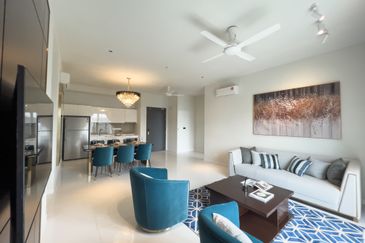
Oxford Residences @ Pavilion Embassy
Keramat, Kuala Lumpur
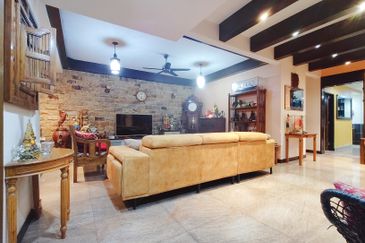
Bandar Botanic
Bandar Botanic/Bandar Bukit Tinggi, Selangor

Kawasan Perindustrian Tampoi
Johor Bahru, Johor
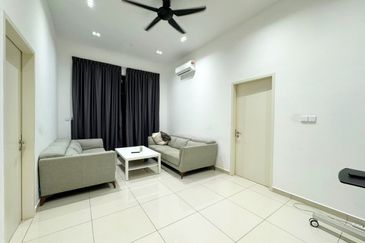
Plenitube Harp @ Taman Desa Tebrau
Johor Bahru, Johor

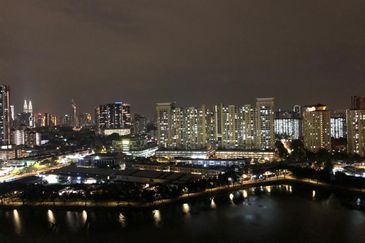


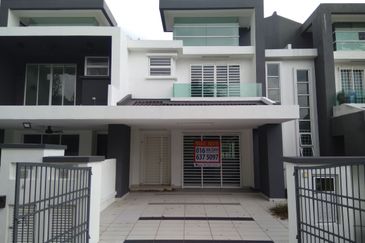
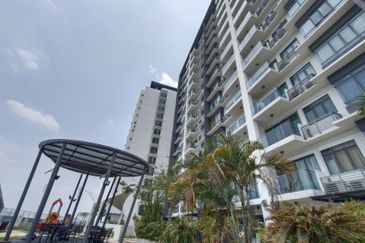
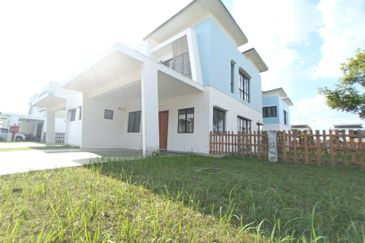


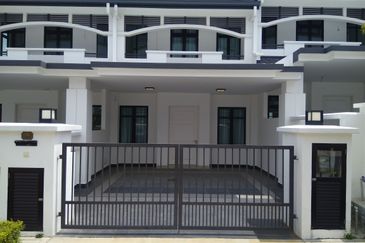

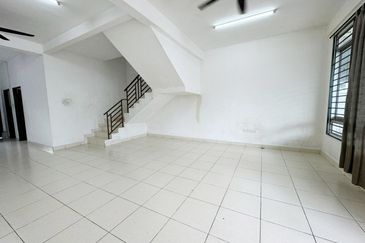


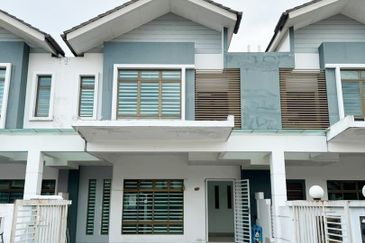
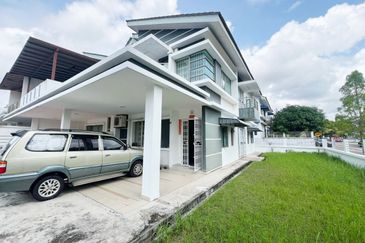

hero.jpg?GPem8xdIFjEDnmfAHjnS.4wbzvW8BrWw)



